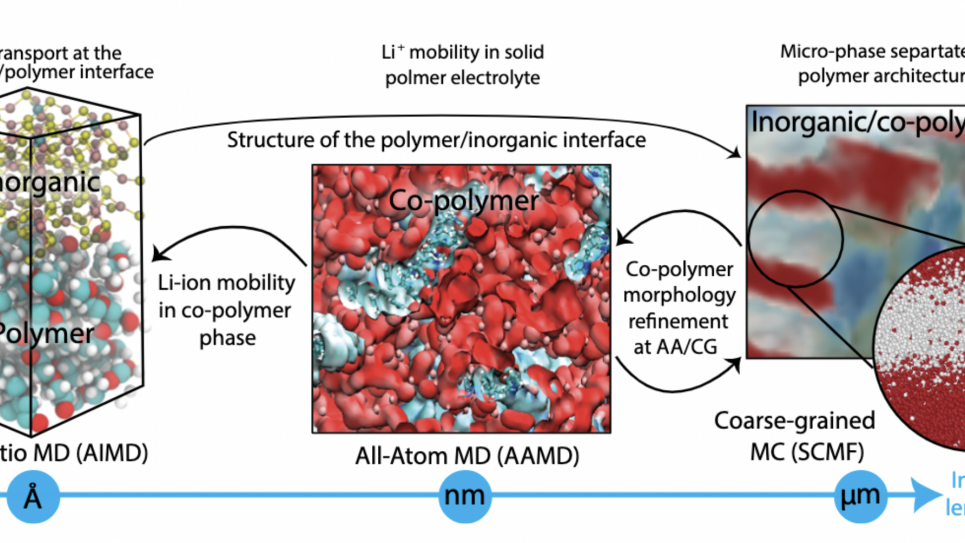
Proposed multi-scale simulation approach and workflow on how information is transferred amongdifferent subprojects (AIMD, AAMD, and SCMF).
This project uses a multi-scale simulation approach to gain insights into the morphology of two distinct interfaces (polymer/inorganic and polymer/polymer interfaces) of solid polymer electrolytes, and their influence on overall ion conductivity. An important aspect of the project will be to develop new methods and augment software tools that will enable simulation of multiscale materials design problems, and which will be disseminate throughout the scientific and engineering communities.
Lithium-ion batteries are widely used for energy storage in electronic devices due to their high energy density. Current batteries, however, face challenges regarding long-term chemical stability and limited energy density, which are both necessary for energy-intensive applications. Addressing these challenges is key to developing next-generation energy storage technologies, and it has been identified as a priority by the Department of Energy (DOE). A promising strategy in lithium-ion battery research is to use lithium metal anode and liquid electrolytes to achieve higher energy densities, but the growth of dendrites continues to pose limits to the stability of such systems. A potential remedy for these problems is to use solid polymer electrolytes (SPEs) instead of liquid electrolytes.
The multi-scale approach is necessary because, in the lithium battery system, multiple distinct processes occur that are separated by orders of magnitude in both length and time, and they all contribute to overall battery performance. The first goal of the project is to identify chemical motifs in polymers that are thermodynamically stable in the vicinity of the inorganic solid phase, and that would enable fast lithium-ion transport across the interface. The second goal is to characterize the polymer/polymer interfaces that are found in microphase separated materials, including copolymers, using chemistries identified under the first goal. To connect each element of our multiscale approach, the individual pieces have to push the limits of what is currently possible with modern supercomputers. With modern supercomputers, state-of-the-art algorithms, and the combination of three different levels of description, it will be possible to simulate real engineering problems without neglecting fundamental effects that arise from the atomistic and quantum nature of the problem.